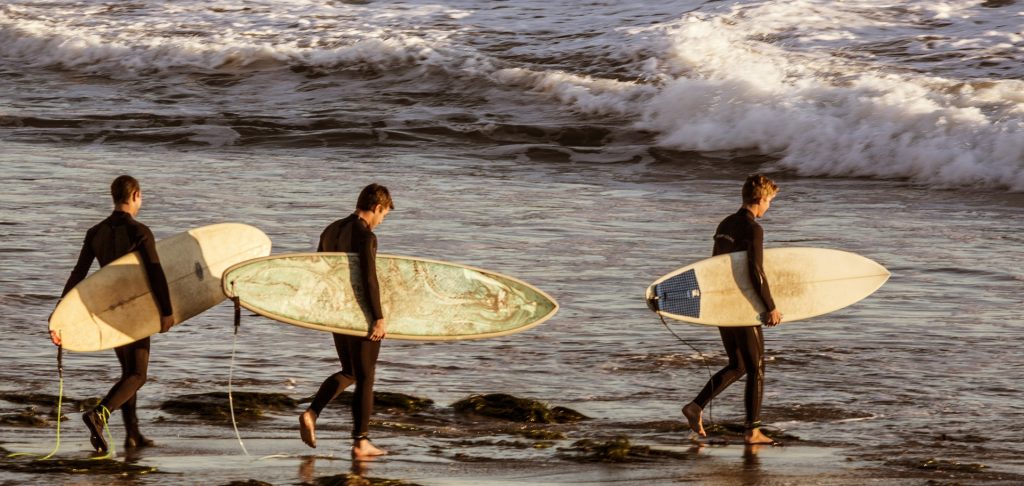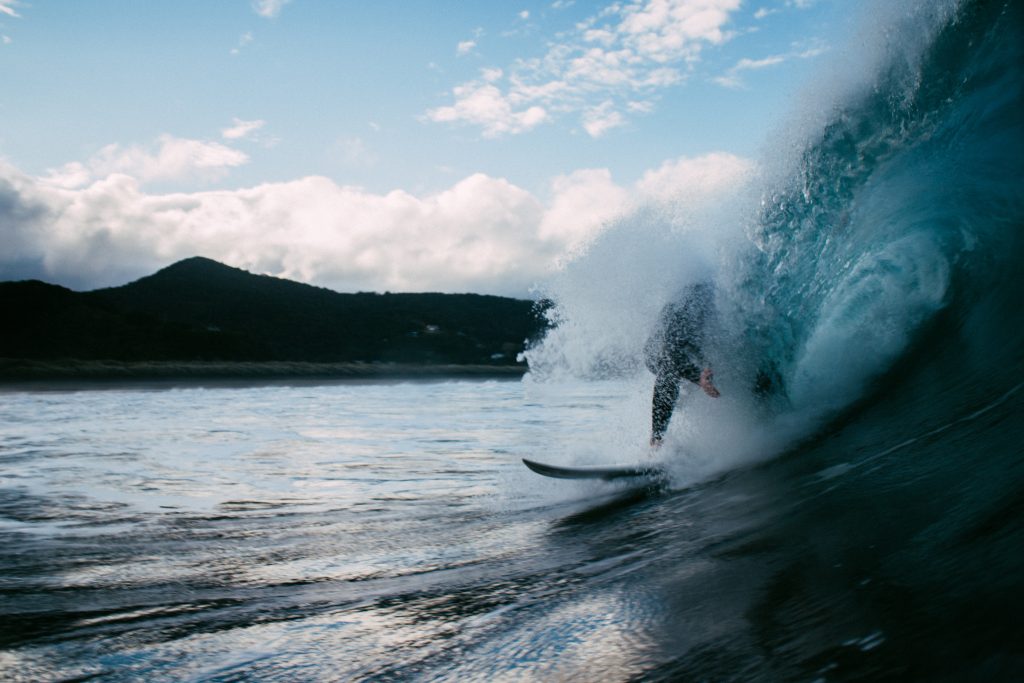Everything You Need to Know About Taking Your Surfboard Abroad
You’ve been dreaming of hitting the waves recently in the likes of Lagos, San Sebastian or Hossegor when you start thinking should you take your surfboard with you or hire one when you arrive.
You have probably heard stories about what happens when you check in your surfboard but don’t panic, just yet! We’ve weighed up the pros and cons for you, now all you need to think about is getting away a week or two of sunshine and great waves.
Is it better to take your Surfboard abroad or hire?
To hire or not to hire? Having your own surfboard with you is familiar, you know what to expect but do you really want the hassle of carrying it through the airport and more importantly risk what might happen to it during transit.
Things to consider…
How much does it cost to hire a surfboard? Will the airline charge extra for checking in a surfboard and board bag? Will the surf equipment at a surf school be suitable for your level?
Where are you going surfing?
In a destination with lots of surfers, you would expect there to be an extensive selection of surfboard’s available however this is not necessarily the case. In quieter locations, it is more difficult to find the perfect surfboard.
What type of board would you like to ride when you arrive?
If you aren’t overly fussy about what you ride and are looking for something standard, then in most places you will easily come across a board to suit you. If you are used to riding a board which is a bit unusual and not standard, then obviously this will be more difficult to find.
Pros and Cons of taking your surfboard abroad…
Surf travel is becoming more and more popular with many travelling to places such as Sagres, Portugal and Capbreton, France.
Let’s start off with the ‘surfer-friendliness’ of airlines luggage policies. It is fair to say that several airlines are trying to make surfer’s lives a lot easier and include generous luggage policies, however, as with most things some aren’t quite hitting the mark and even failing to understand that surfers travel on a regular basis.
What will it cost?
Many airlines charge a substantial fee for taking your surfboard abroad. It depends who you are flying with, but short-haul flights tend to be reasonably cheaper than long haul. Our favourite is British Airways who allow you to take a Surfboard bag for free (T&Cs apply). You’ll have to weigh up whether the extra cost of taking your board away in comparison to hiring one is worth it – sometimes it’s similar but other times there is a huge difference.

Accepts your surfboards as a normal checked bag, if the surfboard bag doesn’t exceed the following dimensions and weight limit: 190cm x 75cm x 65cm (75in x 29.5in x 25.5in) & 23kg (51lb).
Classes surfboards and surfboard bags as ‘large sports equipment’ with a weight allowance of 32 kg per surfboard bag max. One surfboard bag can be carried for £35 per flight. A really good price for a budget airline.
They might be the cheapest booking a flight for your surf holiday but NOT if you want to take your Surfboard away. In terms of their surf/ general sports equipment oversize luggage policies: Up to 100€ per bag with a 20 kg limit! No thanks.
This is the least surf traveller friendly and one best avoided. Not only are their fees extremely high (150€) they may even charge extra for luggage belts. What?!
You must call the airline when booking to reserve space for your board but in principle, they can be for a fee of £30. Not bad!!!
Insurance
Surfing abroad is very popular, meaning there are plenty of companies who offer surfing specific insurance, which includes surfboard cover. If you are still undecided about where to go on your surf holiday, then why not try Mundaka or even Seignosse.
Many surfing injuries occur during collisions with the board, coral reefs or hard sand surfaces. Shoulder injuries are the most common while surfing but all in all, it is a relatively low-risk sport. If you are arranging a surf holiday particularly abroad then it is important to take out the correct type of insurance for your trip.
We would always recommend you take out insurance not only to protect yourself but also your surfboard.
Total costs
| Airline | Cost of flight | Extra Baggage Fee | Insurance Charge | Total Cost (return flight) |
| Ryanair | – | £88 | £45 | Price of flight + £133 |
| Iberia | – | £132 | £45 | Price of flight + £177 |
| Flybe | – | £60 | £45 | Price of flight + £105 |
| British Airways | – | – | £45 | Price of flight + £45 |
| EasyJet | – | £70 | £45 | Price of flight + £115 |
Things to remember when taking your surfboard on a plane
Clearly label your bag and make it identifiable
We keep coming back to this, but if the very worst were to happen, you would want to know in your head that if your bag does go missing, but is found, that whoever finds it would be able to contact you.
Also, by adding something bright, like bits of string, to your bag, will make it much more identifiable when you’re looking at every surf bag which looks the same on the conveyor belt.
Protect, protect, protect
We can emphasise this enough, protect your board at all costs. This doesn’t mean fight any off who comes in close vicinity of your board. What we mean, is use plenty of padding and cushioning while your bag is in the bag. For example, wrap pipe insulation around the rails of your board. Add bubble wrap to the deck of your surfboard. Finally, place your board in a board sock for even more cushioning. Then you’ll be good to go!
Get a durable, well-made bag
Make sure you choose the right board bag for your journey. We’d recommend lugging around a huge coffin board bag, you’ll thank us for this tip! Also, make sure you go for a durable bag. Especially if you’re on a long trip away, your board will likely come to a few blows while it is in transit, so a durable bag is a necessity.
Whichever bag you go for, make sure you don’t scrimp, and you choose a well-made bag. The cost may be slightly higher at first, but a durable bag will last you years!
Should I Hire a Surfboard?
You may ride an unusual surfboard and feel more comfortable using your own. If this is the case your main consideration should be the cost of transporting it. If it’s not overly expensive then it makes more sense.
Looking for flexibility, then renting a board is possibly the best option for you. If the airline charges don’t fit in with your budget and you are relaxed about the type of board then hiring is a great option.
It really depends on your love of your board and the cost. If you are not overly fussed and the cost is similar, then why not hire one when you get there and save the risk of damage.
Whatever you decide we are sure you will enjoy the waves either way!!!
What to do when you’re on the other side
Forget about the hassle of dragging your surfboard from the luggage conveyor belt, out of the doors into the blazing heat and to the taxi stand or public transport station, to wait in line and get more and more sweaty.
Why put yourself through that, when you can book your transfers to the surf resort with Sea-Lifts. We take care of your transfer needs from the airport to resort, you’ll have a friendly driver waiting for you at the airport the moment you step off the plane.

























































